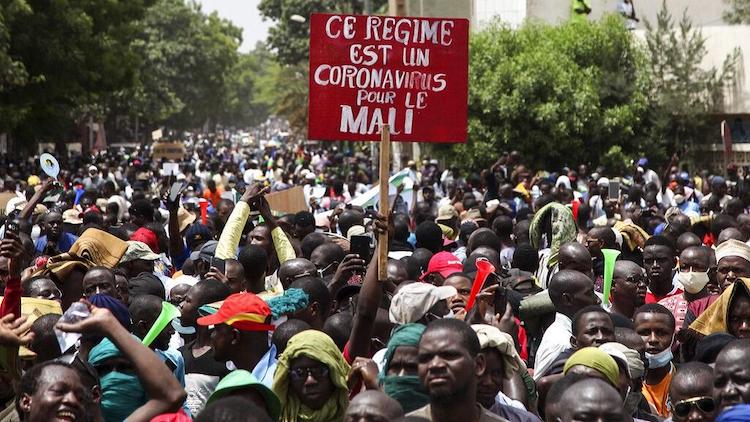South Africa is so harshly awakened from time to time that its history continues to make its present and future problematic. When it observes this truth, it does not necessarily recognize it.
The most recent and horrifying incident is the violence that erupted in two provinces of South Africa, KwaZulu-Natal and Gauteng, when former President Jacob Zuma was imprisoned. The chaos wreaked havoc in KwaZulu-Natal, which Zuma and his African National Congress (ANC) party call home, and in Gauteng, the country ‘s socio-economic powerhouse, which also includes shelters for working migrants from KwaZulu-Natal.
Since the collapse of the apartheid regime 27 years ago, South Africa has seen its greatest bloodshed. Hundreds of stores were robbed, businesses were set ablaze, and state infrastructure was damaged throughout a week of civil unrest that saw over 200 people dead and others jailed.
Causes
The turmoil began on July 8 when former President Jacob Zuma began serving a 15-month jail sentence for contempt of court. Followers set up barriers on major highways and set fire to roughly 20 trucks in his native region of KwaZulu-Natal. The N3 and N2 roads, which connect the Indian Ocean ports of Durban and Richard’s Bay to Johannesburg’s industrial heartland and Cape Town, were blocked due to the riots.
The main question to ask is whether this was just a spontaneous demonstration against the jailing of the former president or is something more at play? President Cyril Ramaphosa has said that the violence was pre-planned, but has not said who he suspects was behind it.
Who Was Behind the Riots?
The rioting has been generally interpreted as an outpouring of rage and resentment among those living in poverty, which has been exacerbated in South Africa by COVID-19’s impact. But it wasn’t a poverty stricken uprising; it was an elite-led onslaught on democracy.
Because most of the violence in KwaZulu-Natal did not follow the usual pattern of rioting in South Africa and other nations, it was disturbingly unfamiliar. While looting was a frequent reaction to conflict by the poverty-stricken population, there was also an attack on infrastructure, business devastation, and the “disappearance” of enormous quantities of bullets. The rioting began following the normal pattern of blocking roads but then the rioting quickly took a sharp turn and evolved to something more in line with the necessity to defend lives and national strategic interests, such as the port of Durban, oil refineries, communication networks and critical enterprises, as well as food and fuel supply lines, which have all been threatened or destroyed. These targets are clearly not associated with looting but rather with a very strategic form of economic sabotage.
The Unsettling Reality
Since 1994, this has been a reality in South Africa. It manifests itself in continual factional warfare between state intelligence officers, in divisions amongst ex-combatants in the anti-apartheid struggle, and in security companies and criminal gangs whose personnel carried weapons prior to 1994.
Their political allegiances may lie with faction members rather than the ruling party, let alone the country. Their networks could be dedicated not just to achieving a single political purpose but also to accumulating riches and economic power. Keeping order has become much more difficult as a result of this. It can also easily facilitate the creation of chaos.
The defense force clearly told South Africans during a conference of top security officials that troops are not around to enforce the law; that is the role of the police.
This is a reference to the notorious apartheid states of emergency in South Africa in the mid-1980s, when the nation had been under martial law. The military’s use is an extremely delicate matter. The fact that so many soldiers have been sent demonstrates the gravity of the issue.
Conclusion
The destruction of economically strategic places makes it apparent that the initial protests were politically organized by supporters of Zuma and much of the subsequent violence and turmoil was part of the same plan to make the country fundamentally ungovernable for the current president to the point where he resigns and the government falls. These riots were a clear threat to democracy and more importantly are a clear result of factional battles within the government itself. While the extent of the bloodshed was new, the source of the conflict was not. They are profoundly rooted in South Africa’s unresolved issues and its failure to establish a single source of public order.
The conflict unleashed its devastation because South Africa’s path to democracy continues to remain unfinished. It conveys a strong statement that the country must look its past in the eye and find means to alter it before history repeats itself. If the ANC tries to smooth over internal political dissents by giving the former president a break of some sort, then South Africa will be in extreme danger as it will set a precedent that a president who is clearly flouting the rules and the ANC’s interests are more important than 60 million South African citizens.
– Siddhant Punamiya, 10G

